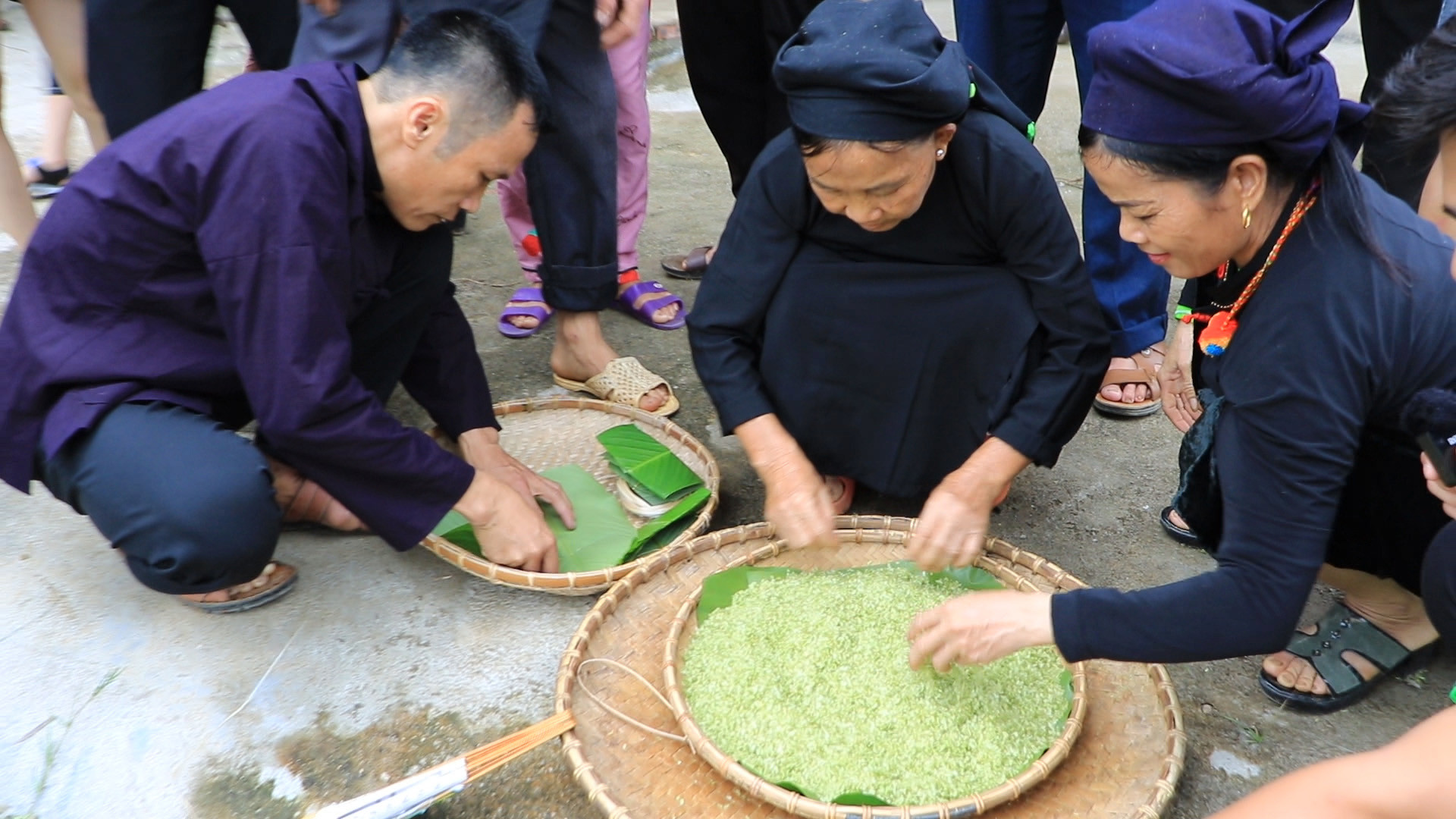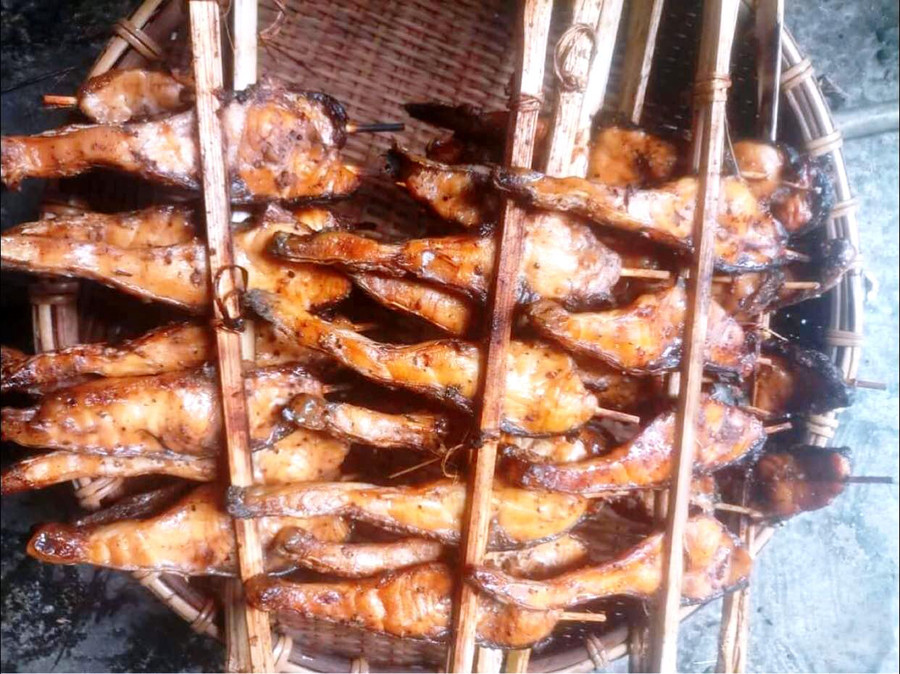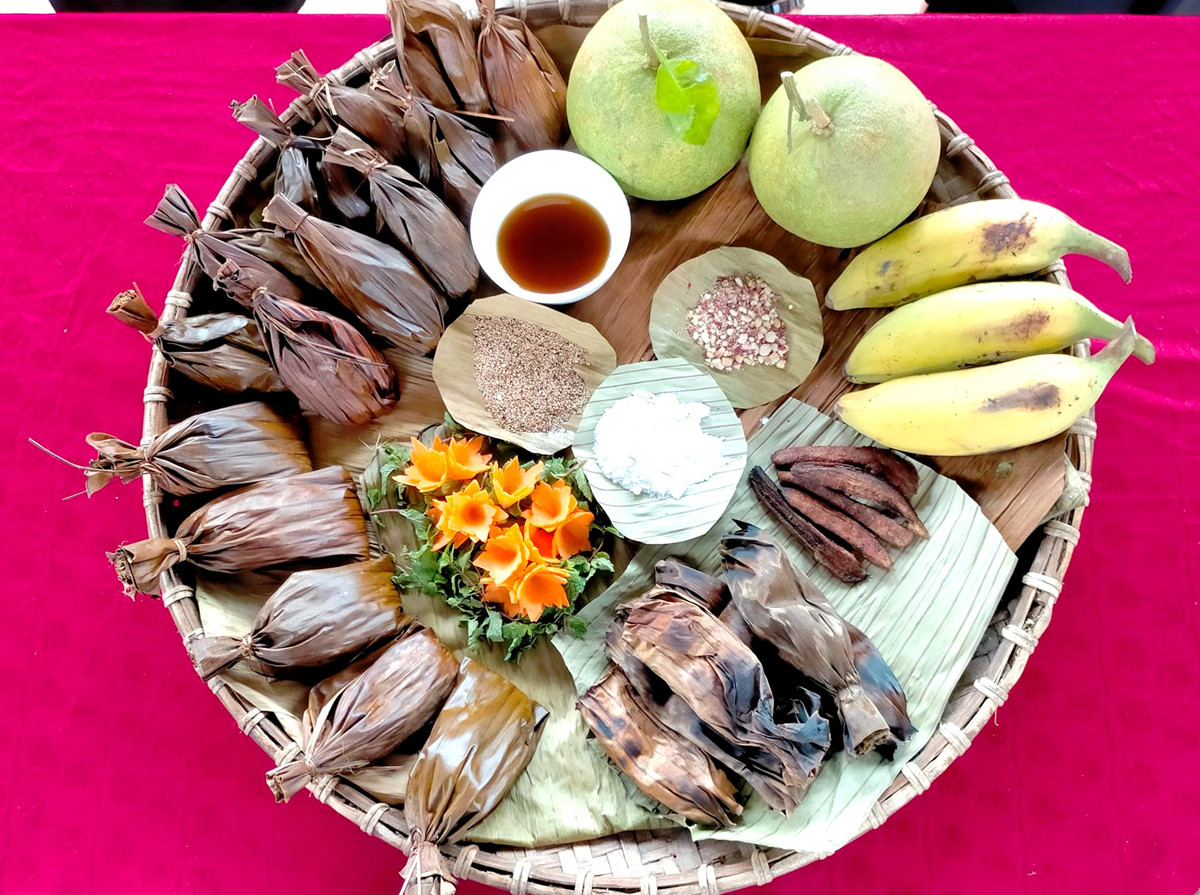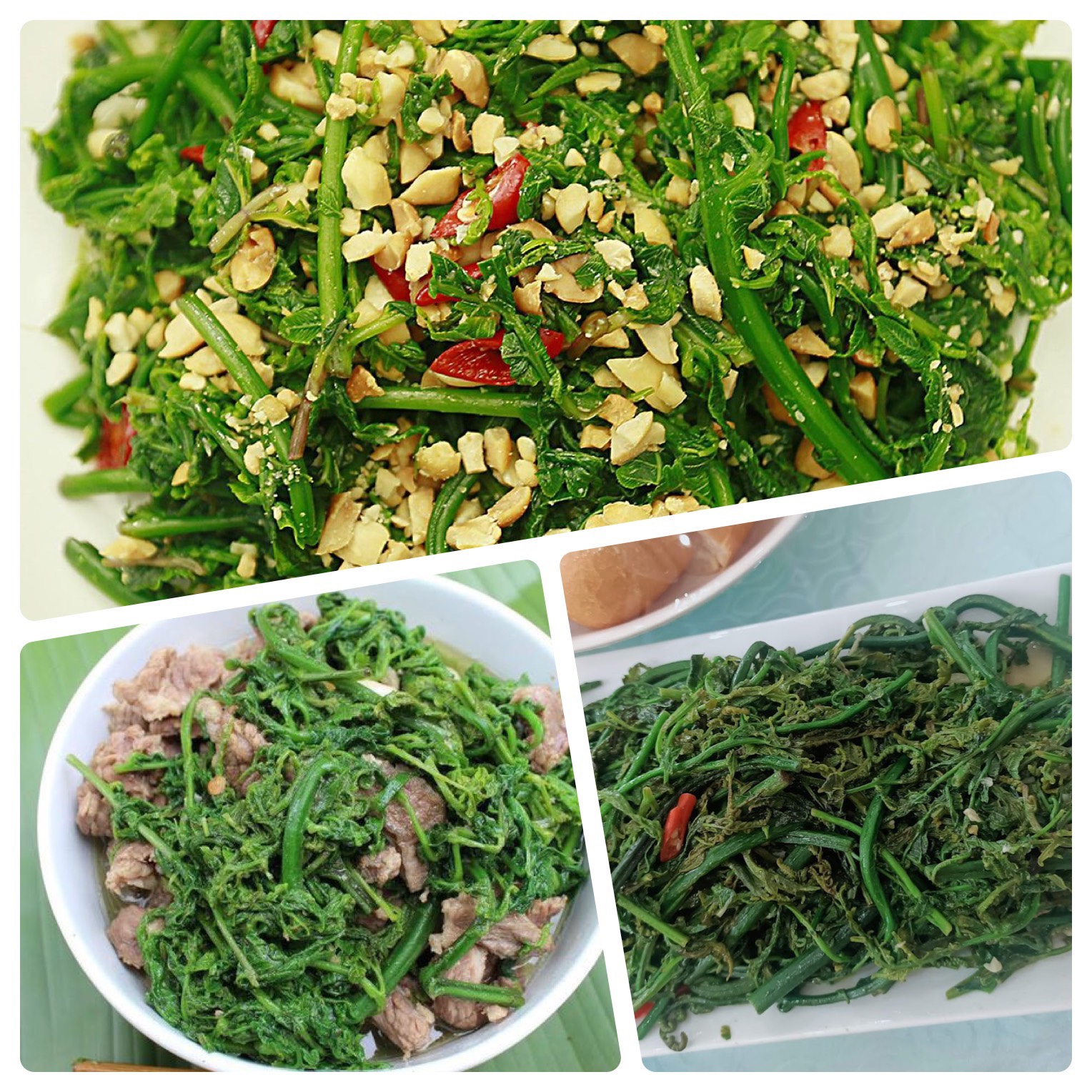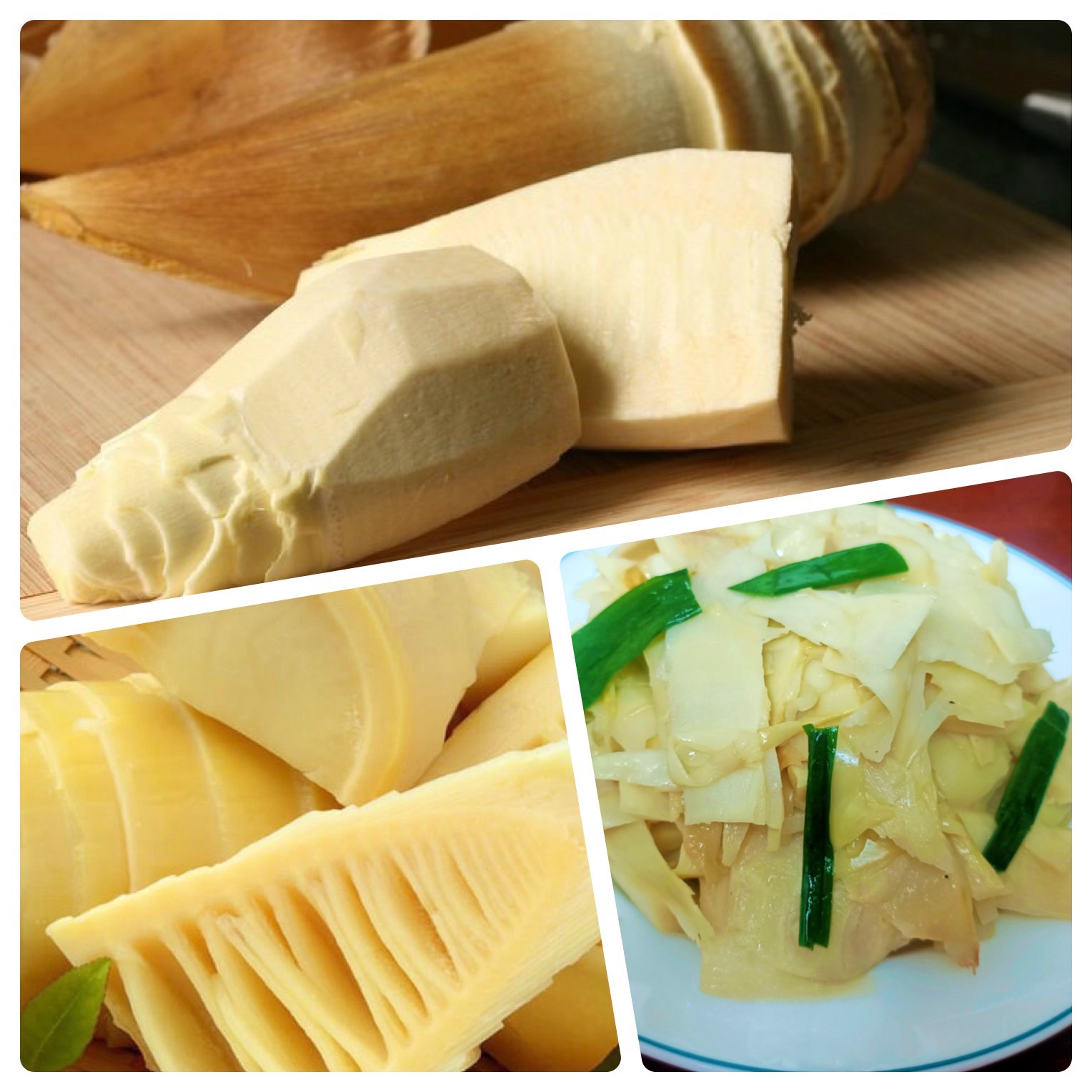Mother’s sticky rice
"Remember dear, roasted rice sometimes have black seeds, so before making sticky rice, you have to pick them up carefully. When soaking, you only pour cold water over the surface of the rice to keep the flavor of the nuggets intact. When a stick of black incense burns out, pour out the rice, drain the water, and then put it in the sticky rice pot. From the time the water boils, you remember to let the firewood simmer to keep the flavor of the sticky rice. When a small incense stick burns out, it is ok." |
| Roasted rice. |
Under the flickering light of the fire, my mother told me that so while making sticky rice. My mother's face glowed in the firelight. The aroma of the roasted rice gradually spreaded in the kitchen, to the yard and alley. I just inhaled the passionate flavor of sticky rice, while helping my mother pour the sticky rice into the tray. A moment later, the packs of sticky roasted rice in green leaves were put knittedly in the luggage, emitting a fragrant aroma. I would take home to share with my friends. To the people of the city, these packs of sticky rice are the precious gift from the countryside.
My mother told: That year, when the rice crop was about to be harvested, natural disasters struck with terrible storms that battered all the rice fields. After many days of hard work, the villagers plucked each unripe rice, brought it home, boiled it, unloaded it, and dried it, in order to save some young rice to eat through the day. Unexpectedly, those "accident" rice grains, when cooked, turned into succulent sticky rice seeds that had a cool and delicious taste that no one had ever tasted. So during the following days, our people were less worried, excited to go to the rice fields to work hard to pick up, pluck each flower and bring it home for preliminary processing, while saving some of the losses caused by God and enjoying delicious dish. Since then, only my hometown has this dish.
The story of the origin of roasted sticky rice through my mother's voice keeps echoing in me, dancing with every movement of my mother's hand, which is skillfully wrapping handfuls of sticky rice in green leaves. Once, I brought roasted rice to the city, called my friends over to my house, excitedly showing off my gift of specialties from the highlands of my hometown. However, the product made was not as delicious as the mother made! I asked my mother, she just laughed: "I don't have any secret in making roasted sticky rice. You see what the water you soak the rice in, what is the pot where the sticky rice you cook in ...". I just lightened up that my hometown's roasted glutinous rice seeds are only chosen to be soaked in pure water flowing down from the mountain? It was also not as sticky as the original when it was cooked in the aluminum pot on the city gas stove? That specialty dish made on the land that gave birth to it is delicious to the very end.
On that day, I watched my mother take care of each roasted rice seed as if she sent all her heart in it to her children. Like the Tay people in my hometown in the past, gently strain each broken rice flower to make sweet and juicy sticky rice. From my mother's hand, in each fragrant sticky rice as if it was distilled from the quintessence of that highland, I felt like I could see drops of sweat on the face of every beloved villager; like I could see their salty tears before natural disasters; I could see both the feelings of the villagers and the mother filled in it.
My mother has passed away for nearly ten years, but her image is still present in my sisters and me, diligently instructing her daughters in every style of living, delicious food, and simple things. “In the family, the woman is the kitchen. Hot and cold also come from the kitchen. Knowing how to make the kitchen always red is to keep the family warm. Knowing how to cook well is also the way to make the family happy." The more I think about my mother's words, the more I understand. My mother is just a simple highland Tay woman who understood the meaning of life through the simile "Fire kitchen". Cryingly looking at the plate of roasted sticky rice on the death anniversary, my whole memories rushed back with my mother's image. There was a warm fireplace that was blown up every morning. There were packs of fragrant roasted sticky rice for her children to share with friends. There were instructions on the lifestyle and cultural identity of the Tay girl as a bride in the city... The packs of sticky rice that day cherished the love of the mother for her children with genuine pride in this unique highland culture.
Honoredly offerring my mother the plate of fragrant roasted sticky rice of our hometown. Naturally, the nostalgia for my mother kept raging in me. The kitchen smoke or the nostalgia blurred my eyes when I looked at the picture of my mother smiling brightly.
I miss my mother. Miss my mother's roasted sticky rice.
And I call that sticky rice filled with that love MOTHER rice.
-----------------
* Khau rang (Roasted sticky rice) (in the Tay language) is the special kind of sticky rice in Bac Ha (Lao Cai), created by the Tay people by harvesting glutinous rice when it's almost half-ripe, cooked, and dried in cool place. It is then milled into rice. Today, in Yen Bai, there is also Tu Le roasted sticky rice.

